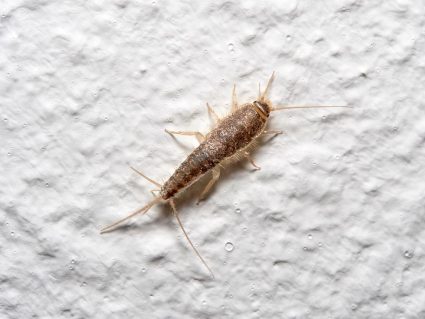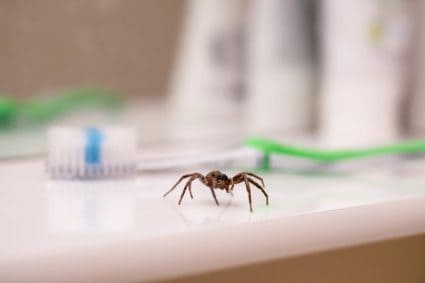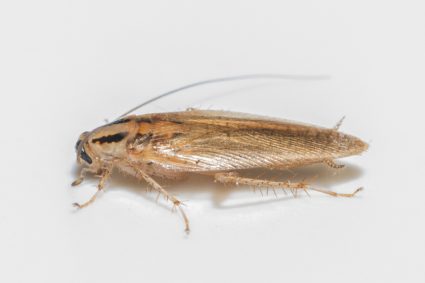
A flea infestation is one of the worst problems you can face in your home. These tiny insects can leave itchy welts on your and your pet’s skin.
A flea infestation on your porch can happen for many reasons. But it is often because a pet with fleas stays on the porch. This article will discuss some very effective ways to deal with a flea infestation on your porch.
Fleas are annoying little bugs that are often difficult to get rid of. Acting quickly, using any of the ways below, can help you manage your flea infestation problem.
- Bathing your pets using vinegar, cloves, and lavender
- Using nematodes, boric acid, or ready-made electric flea traps
- Applying diatomaceous earth (DE)
- Vacuuming your porch
In the following sections, we will discuss effective DIY tricks for exterminating fleas on porches. We have also included answers to some frequently asked questions about flea infestation in homes.
7 Ways To Get Rid of Fleas on Porch
Flea infestations can be difficult to deal with. However, you can remedy the situation by cleaning and using repellants. Below, we consider some of the best remedies for flea infestations on porches.
1. Bathing Your Pet Using Vinegar, Cloves, and Lavender
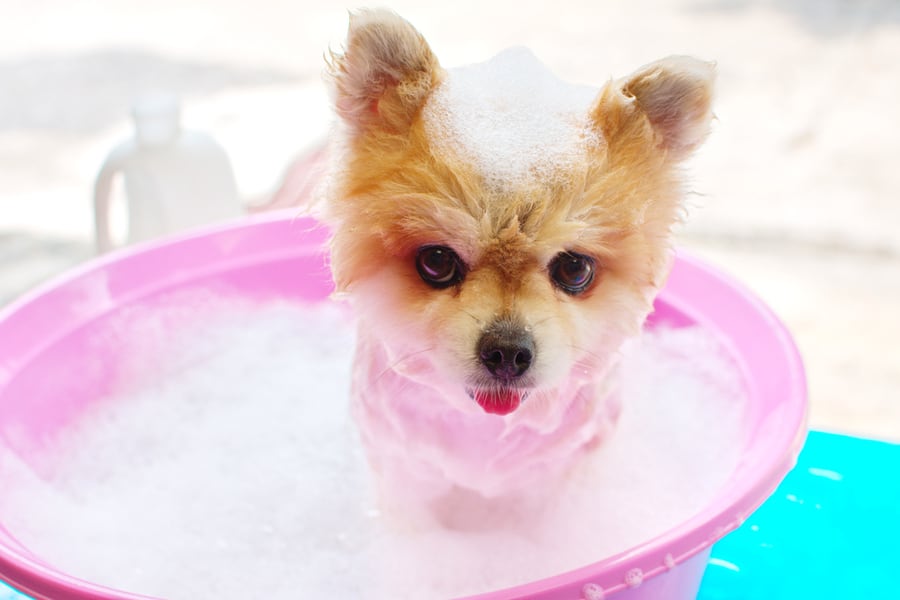
Fleas hate the aroma and taste of vinegar. So, bathing your pets in distilled white vinegar can help make them less attractive to fleas.
Alternatively, you can bathe your pets using a mix of lavender and clove essential oils. These will give your pets’ coat smell and keep fleas off them.
Cloves contain natural extract eugenol, which has pesticide qualities that instantly kill fleas on contact.
If you have dogs, pour some dog shampoo into your palm and add drops of clove or lavender essential oil. Then, bathe them as usual. This should fix your flea problem.
2. Using Electric Flea Traps
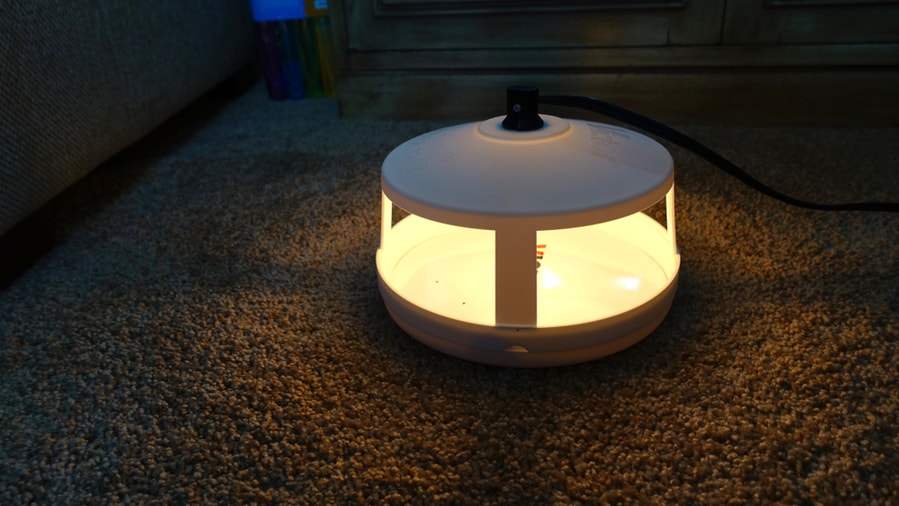
These are traps that use electrocution to kill fleas and other airborne parasites. Electric flea traps use infrared light to draw these parasites close and trap the fleas on a sticky pad.
Once they come closer to the source of light and heat, they suffer instant electrocution. An electric flea trap is easy to use since you do not have to assemble parts.
The tool is already assembled in the box. You only have to bring it out and use it immediately. Plug the electric trap into a power source and leave it overnight. The trap will attract these parasites and kill them off, leaving your porch free of fleas by morning.
If you have kids or pets in this house, this method of flea extermination is a good pick. The electric flea trap is non-toxic, so there are no fears of poisoning. Another good side of this approach is that there is no need to conduct routine maintenance.
3. Using Nematodes
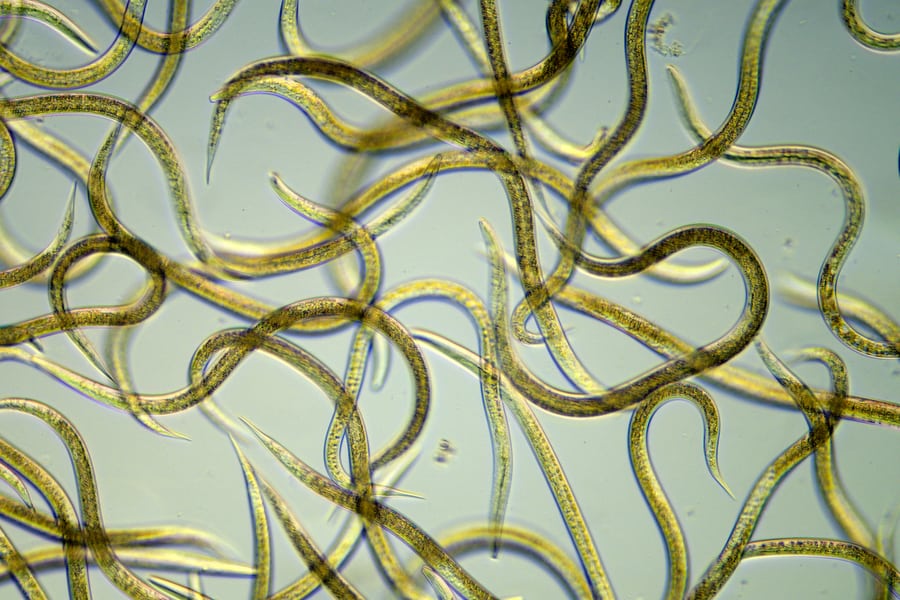
One of the best ways to kill off fleas is to introduce a predator to the mix. Adding more parasites to an existing parasite problem may seem counterproductive. However, nematodes only have eyes for fleas, so there is nothing to worry about. They are microscopic worms attacking adult fleas, larvae, and pupae.
Nematodes do not attach to mammals, so you and your pets are safe from them. After running through their host population (fleas), nematodes die off, leaving you with nothing to clean up.
A single pack of nematodes can contain up to 10 million microscopic parasites. You can get them online, in big stores, or in garden centers.
However, use them as soon as possible because they are living creatures. Otherwise, keep them in the fridge.
Nematodes come in a powder solution that you will need to mix with water. After this, water the area you want to spread it on lightly.
Then, use a watering can or sprayer to apply the solution on your porch and around your yard. Repeat this action every three days for up to two weeks for better results.
You will notice a reduced flea population on your porch within 24 hours.
4. Applying Diatomaceous Earth (DE)

Diatomaceous earth is a powder created from the remains of diatoms. They help to disrupt the lipid barrier surrounding insects. This lipid barrier keeps the water in. Once this barrier breaks, it dries the insect out and kills it.
Diatomaceous earth contains crystalline silica, which is non-toxic to humans and animals, provided it is the food-grade variant.
The filter grade DE can cause severe lung damage. So, you may want to read the label before use.
When shopping for DE, buy the filter grade option or one labeled as a pesticide. The reason is that this grade is strong enough to kill fleas, unlike the food-grade version.
Although DE works well to kill off fleas, you must use it under the right conditions. For example, this substance works only in dry environments.
If you live in humid areas or it rained recently, DE won’t work. So, consider your surrounding climate before trying this option out.
Before you touch diatomaceous earth, put a mask and safety goggles on to prevent inhaling the hazardous dust. The dust can irritate some vital tissues in your body, like your lungs and throat. So, be safe!
Then, using a flour sifter, sprinkle the powder around your porch and the surrounding of your home. You can use a salt shaker to apply it directly to specific areas.
5. Using Water and Soap

You can use water and soap to end your flea infestation problem. Fill a bowl with water and liquid soap and set it on your porch.
Fleas cannot swim. So, they will jump into the water and be unable to break its surface tension.
The fleas typically flail on the water’s surface, trying to reach a physical object. Then, using it as a buffer, they will try to crawl or jump off the surface.
Fleas can survive up to seven days in water. But if submerged, they will be drowned in 24 hours. So, add some drops of dish soap to the water to hasten the process.
The soap contains surfactants that reduce surface tension in water. So, rather than float, the fleas will sink and drown.
6. Using Boric Acid
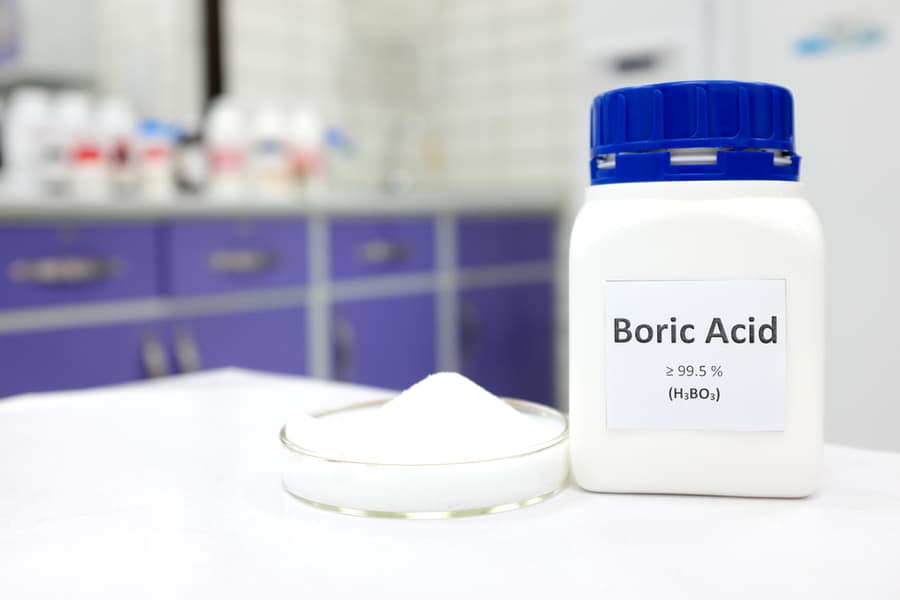
Boric acid, otherwise called borax, is a natural compound that is effective in killing fleas without harming other animals. It comes in powdered form and is available in physical stores and online.
Sprinkle boric acid on your porch and other areas where fleas congregate. Look out for cracks and crevices and get some in there.
You may need to reapply the boric acid powder every couple of days until the fleas stop coming around.
7. Vacuuming Your Porch
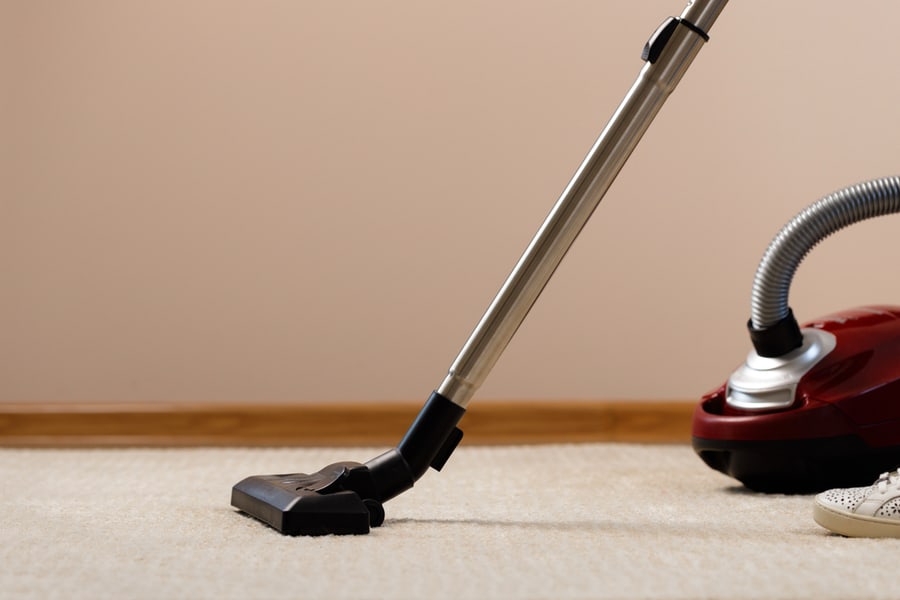
Another effective remedy is to vacuum your porch often until the flea infestation is over. Use your vacuum cleaner on your porch floor, carpeting, pillows, cushions, and along the ceiling.
You can vacuum other areas where you think fleas may hide. Leave no area untouched. Then, bundle all animal bedding on your porch for washing.
Use hot soapy water to kill off any fleas that may be on the animal bedding.
Conclusion
Fleas are annoying little bugs that are often hard to eliminate. Addressing the problem quickly, using any of the ways discussed, can help you deal with your flea infestation problem.
However, if the flea infestation becomes severe or persists, you may need to call professional exterminators. They will help you identify the infestation’s source and permanently eliminate the fleas. Although this option comes at an extra cost, it is worth it.
Frequently Asked Questions
Does Cold Kill Fleas?
Fleas cannot survive in the freezing cold. In fact, the temperature does not have to be so cold before fleas freeze and die.
If the temperature in an area falls to 37 degrees Fahrenheit, fleas will not survive in that area. The temperature is cold enough to kill all fleas, whether mature fleas or eggs.
Do Fleas Live Under Houses?
Fleas typically enter houses, using pets as a channel. However, sometimes, they can use clothing as an access point or jump into houses themselves.
Hard-surfaced floors do not offer much protection from fleas, as they can live in the cracks around their edges. Fleas can get through whether it is a wooden, tile, or laminated floor.
Finally, once inside your house, fleas can live in your basement and moist places underneath your house.
How Long Does It Take To Handle a Flea Infestation?
The duration required to handle a flea infestation depends on many factors. These include your environment and how long fleas have stayed there.
Thorough cleaning and applying topical flea medication on your pets can deal with the problem in days. However, killing off the fleas in an environment may require consistent procedures for weeks.
The reason is that fleas lay eggs quickly, and some develop resistance to certain insecticides and medication.
Also, the larger your home is, the longer it will take to deal with a flea infestation.

